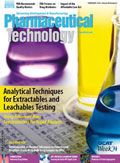The Human Factor
Siegfried Schmitt, Principal Consultant, PAREXEL International, discusses how human error can be mitigated in pharmaceutical manufacturing.
Q. How can human error be reduced?
A. Regulatory inspections often list operator errors or other mistakes performed by personnel as either violations of the law or issues that could lead to non-compliance with relevant healthcare regulations (1). These observations might read as follows: “Out of specification (OOS) results were attributed to human error in sample handling and preparation for testing,” or “…you did not discuss measures to ensure that your standard operating procedures (SOPs) are adequate or explain which steps you are taking to reduce human error in your facility.” The same observations may go on to state: “This failure was due to human error and your firm will retrain appropriate staff on this aspect of the procedure.”
Because the vast majority of pharmaceutical operations require human input or interfaces, they are inevitably prone to error. What is fascinating, however, is the widespread lack of safeguards and controls that can detect human error with high probability or eliminate them altogether. All too often companies merely retrain their staff in the very SOP they failed to follow in the first place.
Rarely, if ever, is consideration given to these basic questions:
- Why did the person not follow the instructions?
- Why would a repeat of training be more effective than the original training?
Organizations should consider incorporating similar questions for employees to answer as part of a mandatory exercise for determining the root cause of any human error. This analysis should help reveal the following:
- The person was not willing/did not consider it important to follow the procedure
- The person did not understand the instructions
- The procedure was incorrect, insufficiently detailed, or incomprehensible and could not be followed
- The SOP did not describe the actual procedure
- The operator was told by management to ignore the SOP
- The training was insufficient or incomplete.
- It is also possible that the person simply made a mistake and that none of the above scenarios apply.
Simple mistake or not, by mandating the above evaluation, the organization will have a complete analysis and record of why its employer made the error. For example: “The right person(s) performed the correct procedure and followed appropriate and relevant instructions, having taken part in the right training program.” Oftentimes, SOPs may contain language that is neither clear nor comprehensible. In some cases, the organization may also find that staff failed to inform management of the need to change or update instructions. Regardless, it is the organization’s responsibility to sufficiently ascertain training effectiveness and encourage continued adherence to instructions.
This is by no means a new viewpoint. In December 1996, FDA described an approach for reducing the likelihood of human error (2). Though additional root causes may be likely, human error is a reality and should be taken into account when designing processes. Eliminating that error requires either removing the human element altogether or, more realistically, developing and implementing adequate safeguards that prevent, minimize, or eliminate negative impact from these errors. The credo should be prevention rather than correction.
References
1. FDA, FDA Warning Letters, accessed Jan. 6, 2014.
2. D. Sawyer, Do It By Design--An Introduction to Human Factors in Medical Devices (1996),

Siegfried Schmitt, Principal Consultant, PAREXEL International, discusses how human error can be mitigated in pharmaceutical manufacturing.
